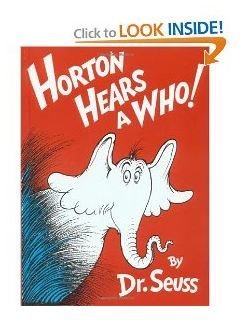Sound & Echolocation: Lesson & Webquest for Elementary STudents
Gather your students together and share one of the many books that deal with Sound. For early primary students you may choose
Horton Hears A Who by Dr. Seuss. Other book suggestions include:
Goodnight Owl by Pat Hutchins
Peace At Last by Jill Murphy
T****he Country Noisy Book by Mareget Wise Brown
The Indoor Noisy Book also by Margaret Wise Brown
The Loudest Noise in the World by Benjamin Elkin
Then take your students on a ’listening walk’ either inside the school or outside. Ask them - what was the quietest, loudest, favorite, and most mysterious noises you heard?
Task
Today you are going to be conducting a Sound Webquest. You are scientists and you are going to make a presentation to fellow scientists about sound. You will use the computer to learn on-line information, details and facts. Tell your students:
In teams of 3 (or 2) you will find out and report about:
- What is sound? (N.B., teacher’s note. simplistic explanation: sound is vibration)
- How is sound made? (N.B., teacher’s note. Simplistic explanation: by vibrating in things; when objects vibrate)
- How do we hear?
- How do we care for our ears?
- What is sound pollution? Can we do anything to lessen it?
What is very special about a bat’s hearing?
Choose one of these animals and describe how they hear:
cat
dog
fish
owl
Use the resources and make your reports in writing and pictures. Use of the tape recorder is allowed.You will make your presentation to your fellow scientists and you should make it as interesting as possible. Maybe you could use simple props to demonstrate some of your findings. (tuning forks, elastic bands, tin can and string telephones etc). Check out Book Review Activities for interesting ways to report.
You will be evaluated by me (the teacher), your peers, and yourself on: your presentation, your co-operation and on how well you worked.
Process
Wrapping It Up
-
After the reports have been presented, invite students to stay perfectly still for one minute and then make a list of the sounds they heard.
-
Make a musical scale by tapping glasses filed with water to various levels.
-
Play a recording of various sounds and invite your students to paint a picture of what they hear.
-
Make ‘sound’ mobiles. Use foil plates and wooden sticks suspended from wire coathangers so that when there is a draught they click together to make sounds.
Evaluation
Teacher Evaluation
Did the students follow directions?
Did the students complete the task?
Did they use the resources wisely?
Did they use creative methods to report?
Did they understand the concept of sound?
Did the students work co-operatively?
Peer Evaluation
Did you learn something new from this presentation?
What did you like about this presentation?
Self Evaluation
Did I complete my work?
Did I do my very best?
Did I co-operate with my group and help to find the answers?
Was my work neatly presented?
